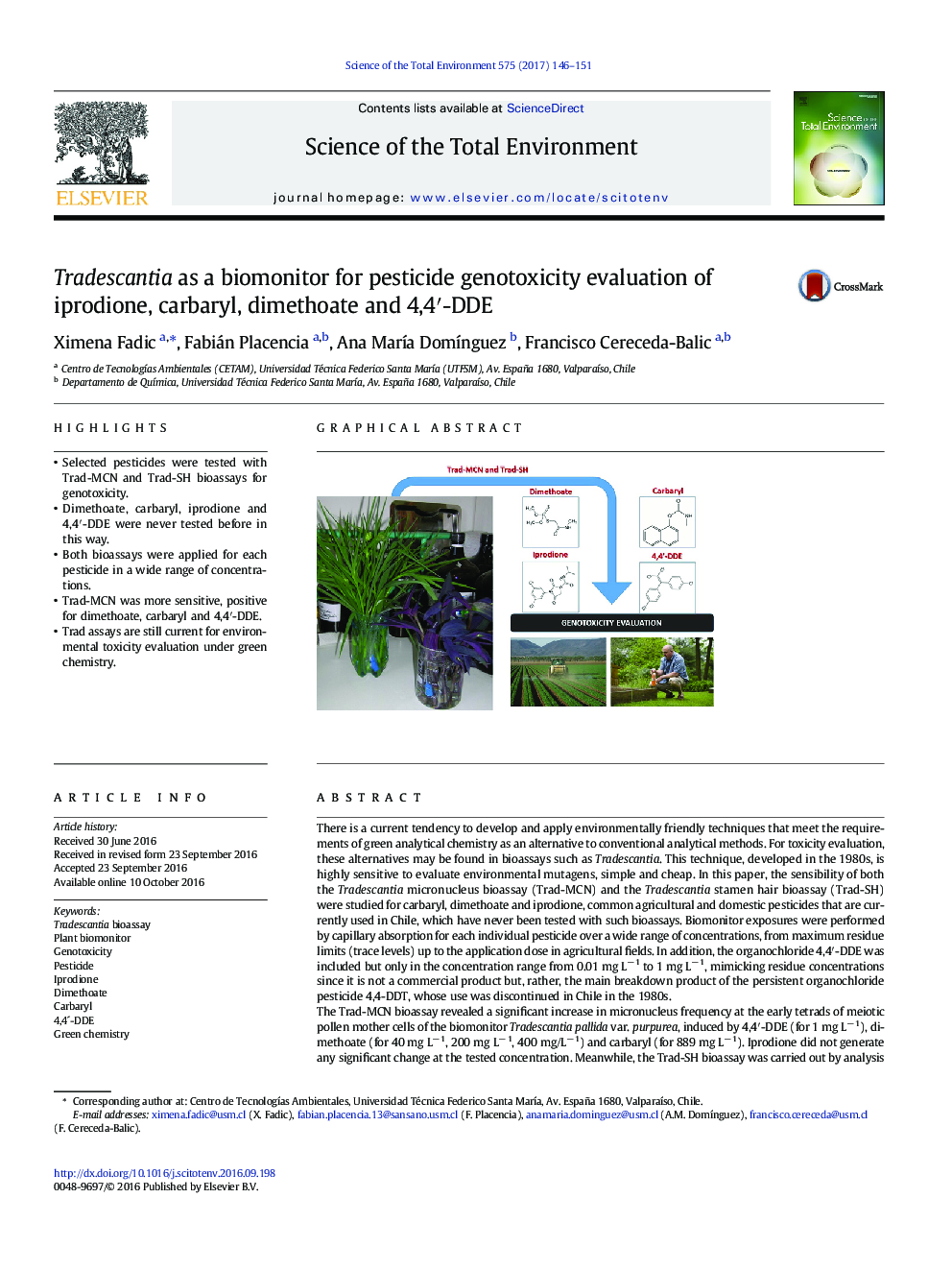| کد مقاله | کد نشریه | سال انتشار | مقاله انگلیسی | نسخه تمام متن |
|---|---|---|---|---|
| 6319413 | 1619716 | 2017 | 6 صفحه PDF | دانلود رایگان |

- Selected pesticides were tested with Trad-MCN and Trad-SH bioassays for genotoxicity.
- Dimethoate, carbaryl, iprodione and 4,4â²-DDE were never tested before in this way.
- Both bioassays were applied for each pesticide in a wide range of concentrations.
- Trad-MCN was more sensitive, positive for dimethoate, carbaryl and 4,4â²-DDE.
- Trad assays are still current for environmental toxicity evaluation under green chemistry.
There is a current tendency to develop and apply environmentally friendly techniques that meet the requirements of green analytical chemistry as an alternative to conventional analytical methods. For toxicity evaluation, these alternatives may be found in bioassays such as Tradescantia. This technique, developed in the 1980s, is highly sensitive to evaluate environmental mutagens, simple and cheap. In this paper, the sensibility of both the Tradescantia micronucleus bioassay (Trad-MCN) and the Tradescantia stamen hair bioassay (Trad-SH) were studied for carbaryl, dimethoate and iprodione, common agricultural and domestic pesticides that are currently used in Chile, which have never been tested with such bioassays. Biomonitor exposures were performed by capillary absorption for each individual pesticide over a wide range of concentrations, from maximum residue limits (trace levels) up to the application dose in agricultural fields. In addition, the organochloride 4,4â²-DDE was included but only in the concentration range from 0.01 mg Lâ 1 to 1 mg Lâ 1, mimicking residue concentrations since it is not a commercial product but, rather, the main breakdown product of the persistent organochloride pesticide 4,4-DDT, whose use was discontinued in Chile in the 1980s.The Trad-MCN bioassay revealed a significant increase in micronucleus frequency at the early tetrads of meiotic pollen mother cells of the biomonitor Tradescantia pallida var. purpurea, induced by 4,4â²-DDE (for 1 mg Lâ 1), dimethoate (for 40 mg Lâ 1, 200 mg Lâ 1, 400 mg/Lâ 1) and carbaryl (for 889 mg Lâ 1). Iprodione did not generate any significant change at the tested concentration. Meanwhile, the Trad-SH bioassay was carried out by analysis of the phenotype variations of the stamen hair cells of the Tradescantia clone KU-20 for the same pesticides and doses. This bioassay was not sufficiently sensitive for toxicity evaluation of most of the pesticides tested, with exception of dimethoate in low doses (2 and 5 mg/Lâ 1).
147
Journal: Science of The Total Environment - Volume 575, 1 January 2017, Pages 146-151